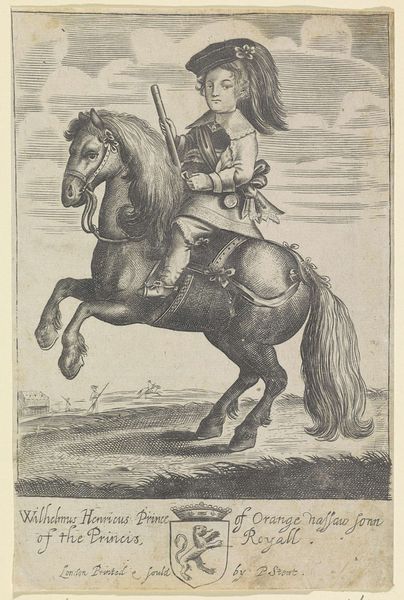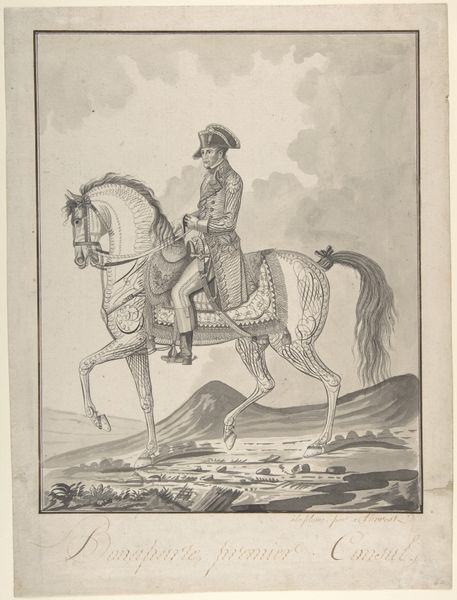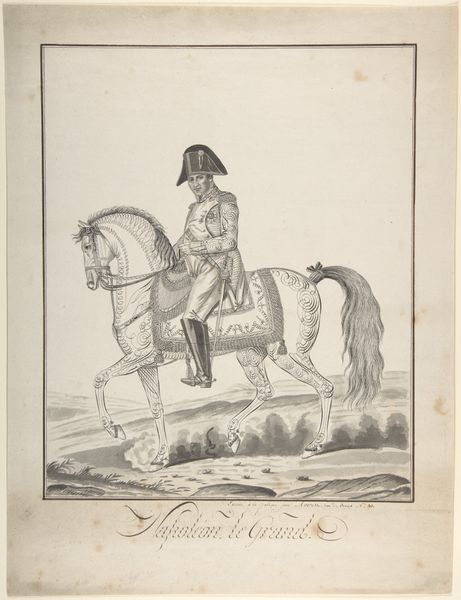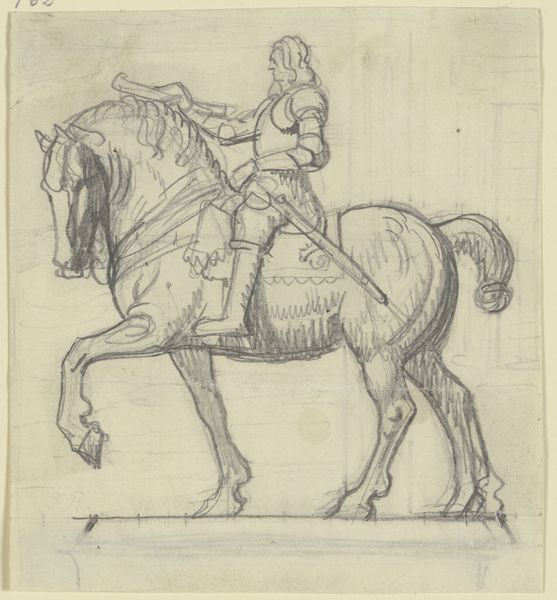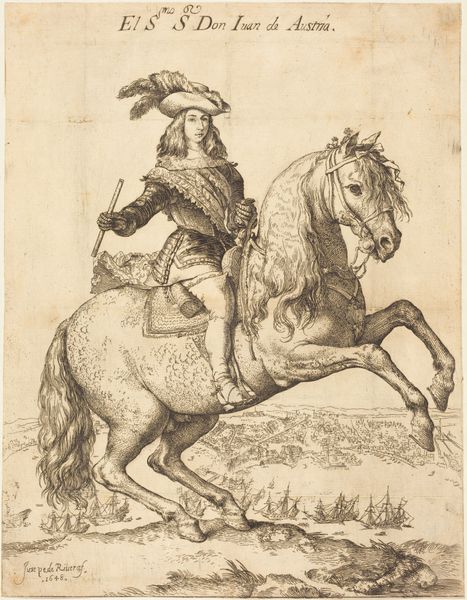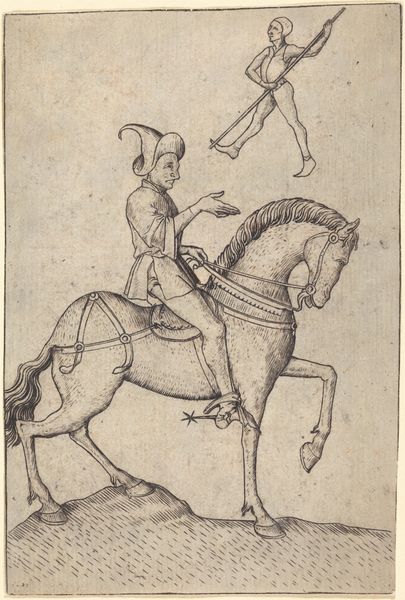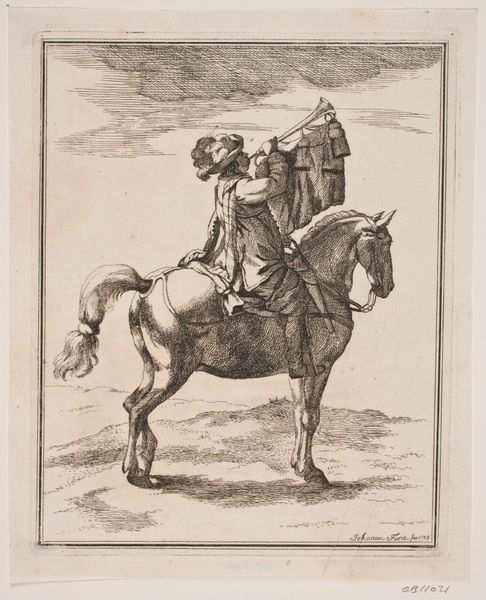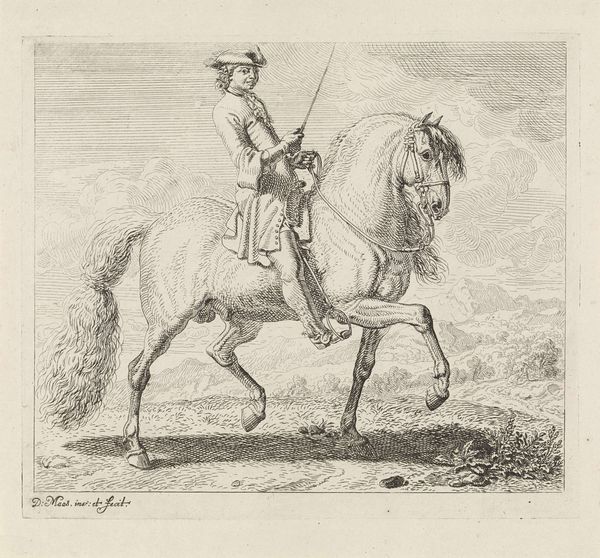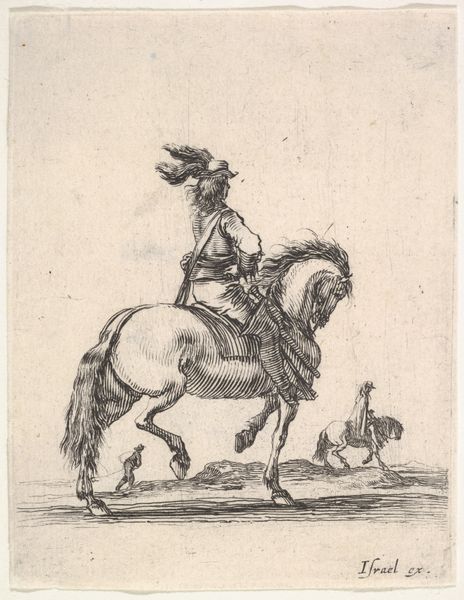
drawing, print
#
portrait
#
drawing
# print
#
history-painting
#
academic-art
Dimensions: 16 1/4 x 12 3/8in. (41.3 x 31.5cm)
Copyright: Public Domain
Curator: Standing before us is an "Equestrian Portrait of Henry IV," a drawing and print dated roughly between 1775 and 1825. I see a monarch on horseback, seemingly captured in a triumphant, if rather restrained, pose. What strikes you immediately about this rendering? Editor: Restrained is right! It feels like a costume drama on a quiet afternoon. The monochromatic palette gives it a sense of faded glory, like a dream of kings rather than the real deal. But what I find compelling is the material—it's not paint, it's lines. The linear work on that horse...mesmerizing! Curator: Exactly! The line work here is fantastic. The spirals on the horse’s body almost distract from the king. There’s an incredible contrast between the detailed armour and the fantastical flourishes of the horse. One wonders what that artist intended. The spirals almost speak to the horse not being quite real. Editor: The spiraling decoration is almost textile-like. Makes you wonder about the artisan class and the printmaking trades of the era—how accessible this image would've been, or the levels of skill that might be apparent through these graphic forms. Did the artist design fabrics, maybe? I love when high art mingles with "lesser" crafts; the point of their intersection reveals so much about the culture of their time! Curator: That’s insightful! Considering that this portrait now resides at The Metropolitan Museum of Art suggests it transcends its possibly humble origins. It makes one wonder about notions of power and image. Was this image made as a propaganda piece or perhaps as more of a nostalgic remembrance? Editor: Or maybe as simply fashionable...think about it. Images reproduced across media and even woven into textiles. A material symbol consumed as an aristocratic accessory and eventually archived as a cultural artifact. Even today, the cycle continues; it feels wonderfully relevant. Curator: I never would have considered it that way! I was too caught up in my notions of royalty and history. But, thanks to you, I'm now seeing this work as something far more materially complex than I first assumed. Editor: And thanks to your musings on royalty and remembrance, I feel as though I can look deeper and find unexpected entry points beyond material means and commodity exchange. I am happy we can dream these worlds, Curator.
Comments
No comments
Be the first to comment and join the conversation on the ultimate creative platform.
